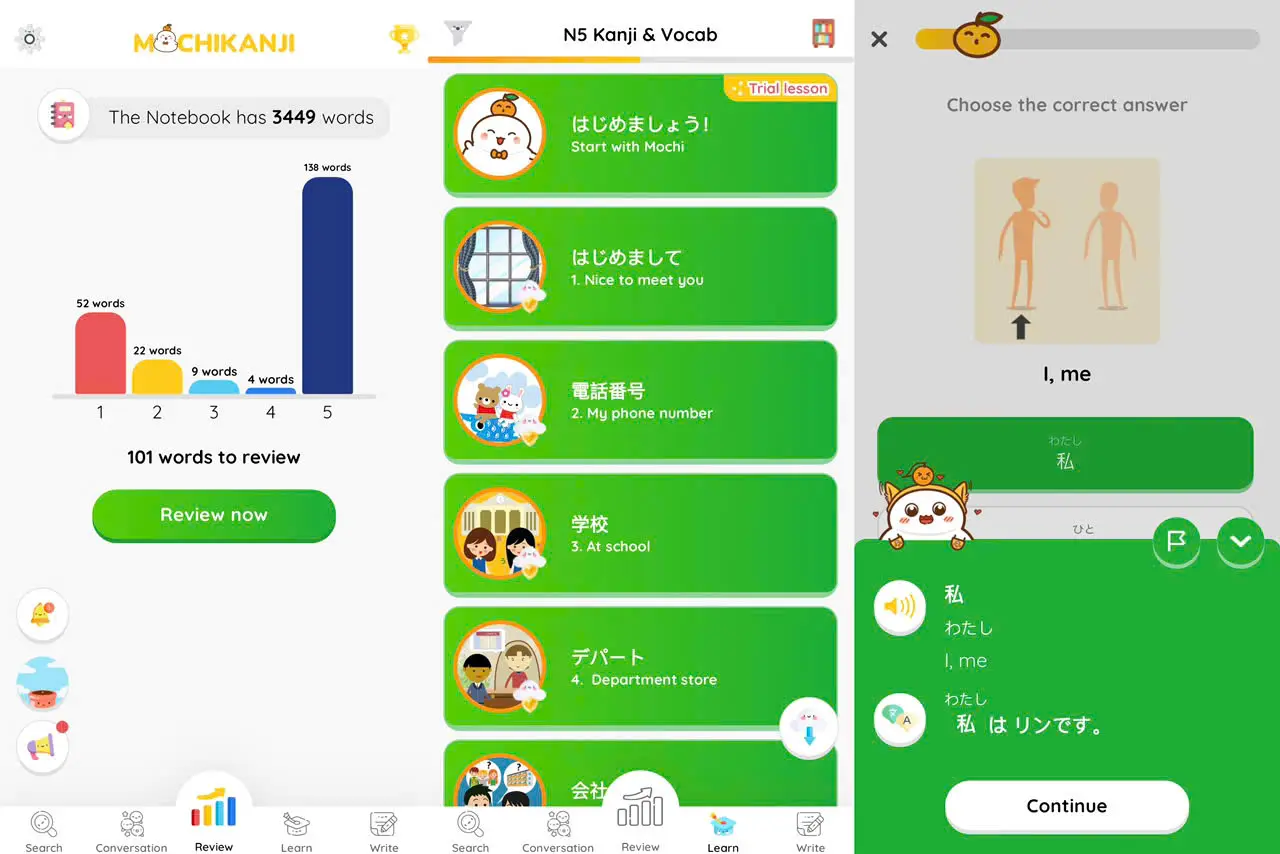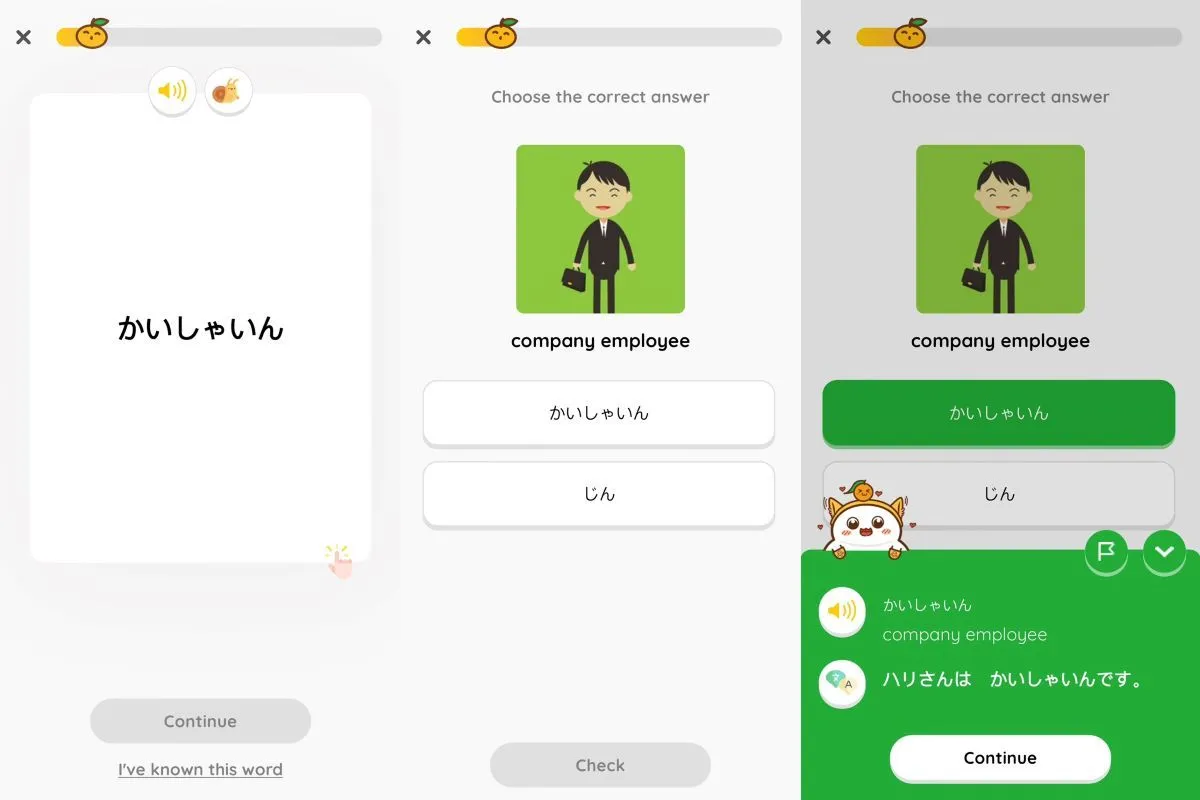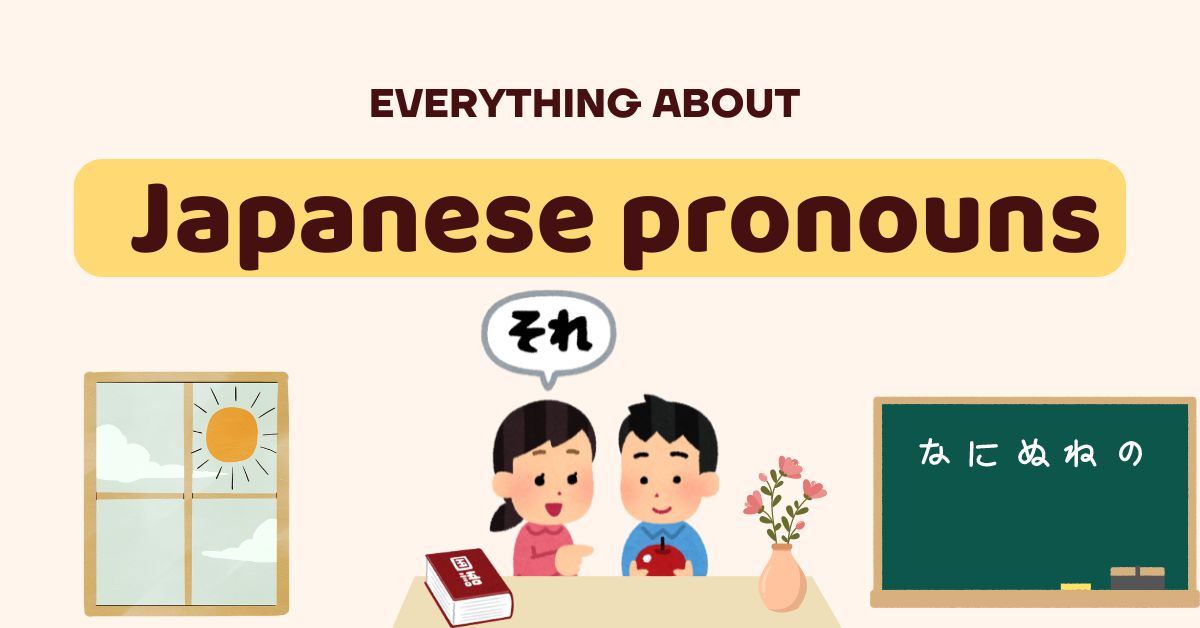Understanding pronouns in Japanese is crucial for mastering the language’s unique characteristics. Unlike English, Japanese pronouns are not used as frequently, and their usage can significantly vary based on context, formality, and the speaker’s gender. This guide will explore the different types of pronouns, provide examples, and explain how to use them effectively in conversation.
- Overview of Japanese pnonouns
- Japanese Personal Pronouns
- Japanese Interrogative Pronouns
- Japanese Indefinite Pronouns
- How to Use Pronouns in Japanese

Overview of Japanese Pronouns
Japanese pronouns often serve the same purpose as pronouns in English, referring to the first, second, and third person. However, the Japanese language features a broader array of pronouns, each carrying nuances that reflect the speaker’s and listener’s relationship, social status, and the level of formality. Pronouns in Japanese can often be omitted if the subject or object is clear from the context, which is a common practice and is considered perfectly grammatical.
Japanese Personal Pronouns
Personal pronouns in Japanese vary widely and are an essential aspect of the language’s pronoun system.
First Person Pronouns (I, me):
- 私 (わたし – watashi): The most common and neutral first-person pronoun, used in formal and polite contexts by both genders.
- 僕 (ぼく – boku): Used primarily by males, especially younger males, in informal contexts. It carries a softer, more casual tone.
- 俺 (おれ – ore): Predominantly used by males in very casual or informal situations. It can appear rude or overly familiar if used in the wrong context.
- あたし (atashi): A casual form of “watashi,” often used by women.

MochiKanji is a powerful tool for mastering Japanese vocabulary, including personal pronouns, through its spaced repetition flashcards and smart review system. It helps learners retain key words and kanji more efficiently. To explore more personal pronouns and improve your Japanese fluency, try MochiKanji today!
Second Person Pronouns (You):
- あなた (anata): Generic and polite, used when the listener’s name is not known. However, it can sound overly distant if overused.
- 君 (きみ – kimi): Casual and often used towards someone of equal or lower status, commonly by males towards females.
- お前 (おまえ – omae): Very informal and can be rude if used inappropriately. Used among close friends or in anger.
Third Person Pronouns (He, She, They):
- 彼 (かれ – kare) and 彼女 (かのじょ – kanojo): These pronouns mean “he” and “she” respectively and are used much like their English counterparts but are less frequent in conversation.
- あの人 (あのひと – ano hito): Literally “that person,” used when referring to someone not present in the conversation. It’s polite and gender-neutral.
Japanese Interrogative Pronouns
Interrogative pronouns are used to ask questions about people or objects and are crucial for acquiring information.
- 誰 (だれ – dare): “Who”
- 何 (なに/なん – nani/nan): “What”
- どこ (doko): “Where”
- どれ (dore): “Which”
- いつ (itsu): “When”
Each of these can be used in various constructions to form questions, such as 誰が来ましたか?(Dare ga kimashita ka?) – “Who came?”
Japanese Indefinite Pronouns
Indefinite pronouns refer to non-specific objects or people and are similar in function to English pronouns like “someone” or “anything.”
- 誰か (だれか – dareka): “Someone”
- 何か (なにか – nanika): “Something”
- どこか (どこか – dokoka): “Somewhere”
- 誰も (だれも – daremo): “No one” (with negative verb)
- 何も (なにも – nanimo): “Nothing” (with negative verb)
These pronouns are frequently used in both questions and statements, providing flexibility in describing quantity, presence, or existence in a non-specific manner.
How to Use Pronouns
Using pronouns correctly requires understanding the social context and relationship between the speakers. Here are some guidelines:
- Be Mindful of Formality: Choose pronouns that match the formality of the situation. Use more formal pronouns with superiors or in formal settings.
- Consider Gender and Age: Some pronouns are more common among certain genders and age groups.
- Listen and Adapt: Pay attention to the pronouns used by others in similar contexts and adapt accordingly.
Summary
Japanese pronouns are multifaceted and deeply embedded in the culture’s communication style. Understanding when and how to use these pronouns is not only crucial for language proficiency but also for navigating social interactions effectively. By mastering the use
communication skills and deepen their understanding of Japanese social dynamics. As you become more familiar with the nuances of these pronouns, you’ll find yourself engaging more naturally and appropriately with native speakers.
To ensure effective learning and usage of pronouns:
- Practice Regularly: Like any aspect of language learning, regular practice is key. Engage in conversations with native speakers or utilize language exchange platforms to practice using pronouns in context.
- Cultural Immersion: Immersing yourself in Japanese media such as films, TV shows, and books can help you observe how pronouns are used in various social contexts. This method also helps in understanding cultural nuances that textbooks may not fully convey.
- Language Classes or Tutoring: Formal instruction can provide structured learning and personalized feedback on pronoun usage, helping to correct mistakes early on.
Advanced Tips for Mastering Pronouns
- Adjust According to Feedback: Be attentive to feedback from native speakers and be willing to adjust your pronoun usage. Japanese speakers are generally very understanding of language learners and can offer valuable insights.
- Learn to Drop Pronouns: As you advance, you’ll notice that Japanese often omits pronouns in conversation where the subject is understood from context. This is a more natural way of speaking and can be practiced as you become more comfortable with the language.
- Expand Your Vocabulary: While learning pronouns, also work on expanding your overall vocabulary. This approach helps in framing better sentences and understanding when and how to appropriately use different pronouns. One effective way to achieve this is by using the MochiKanji app, which offers a comprehensive set of flashcards designed to reinforce your vocabulary. With regular practice, you can improve not only your knowledge of pronouns but also your overall language skills, making it easier to communicate effectively in Japanese.

MochiKanji has many vocabulary courses and communication patterns suitable for many needs and levels. Leveraging the principles of spaced repetition, MochiKanji strategically schedules reviews of Kanji characters to optimize long-term retention. By presenting Kanji at optimal intervals, the app reinforces learning, ensuring that newly acquired knowledge is not lost to the depths of forgetfulness.
Start your free trial now!
Conclusion
Understanding and using Japanese pronouns effectively is a crucial aspect of mastering the language and requires more than just memorizing forms. It involves an appreciation of cultural nuances, awareness of social hierarchies, and the flexibility to adapt language use as needed. With the right strategies and a commitment to immersive learning, anyone can master the use of pronouns, enhancing both their linguistic skills and cultural understanding.
Whether you are a beginner just starting to navigate the complexities of Japanese grammar or an advanced learner refining your fluency, the proper use of pronouns is integral to effective communication. Embrace the learning process, practice diligently, and you will find that with each conversation, your grasp of pronouns and your confidence in using them will grow, opening up a richer, more engaging experience with the language and its speakers.






